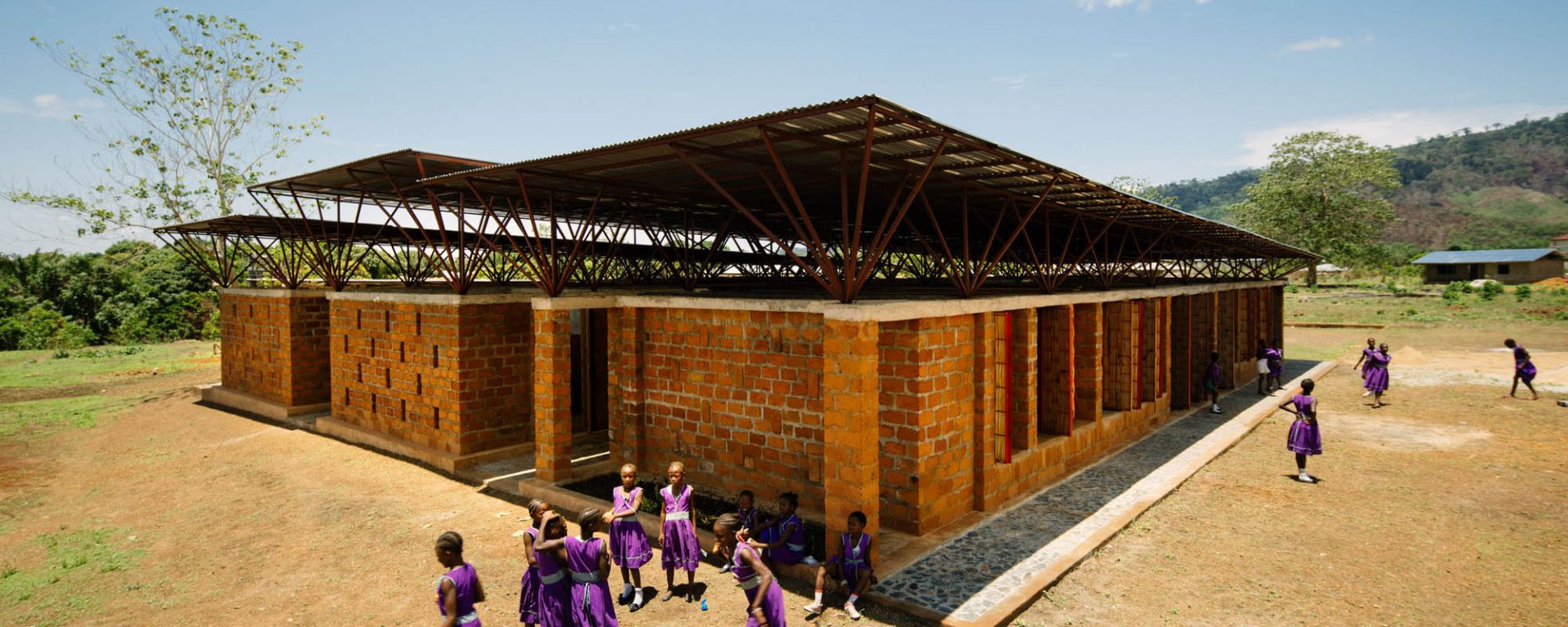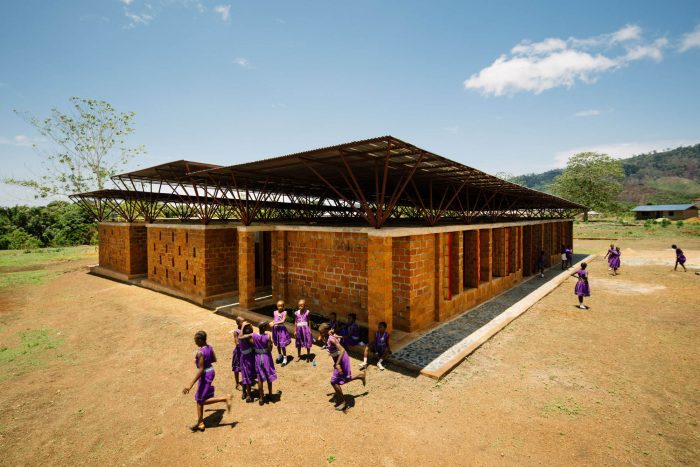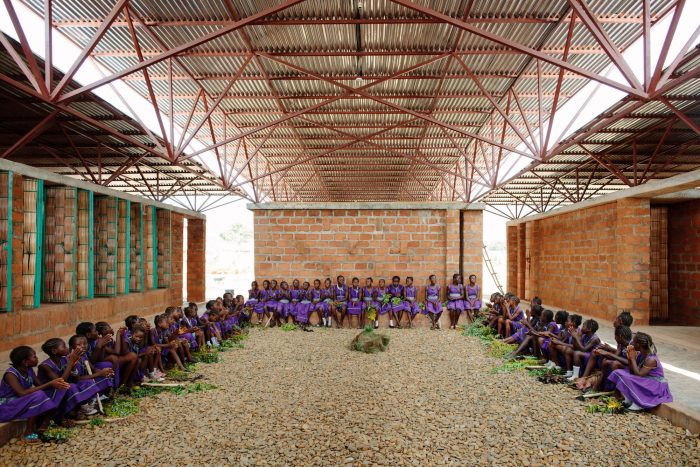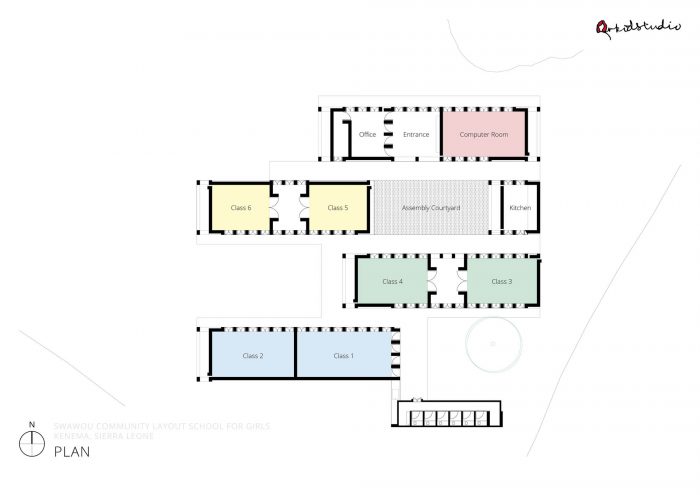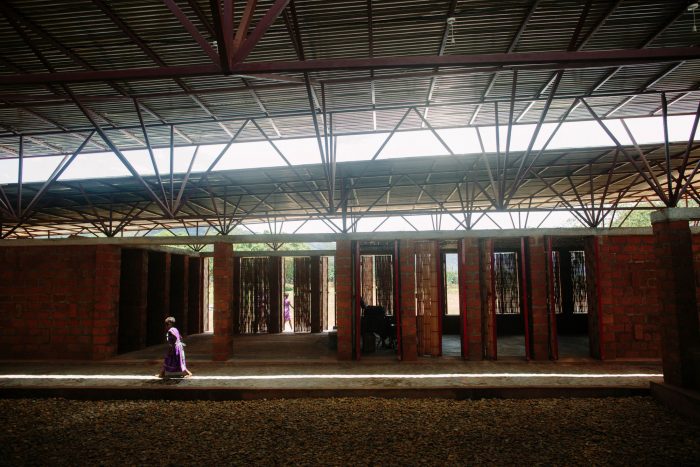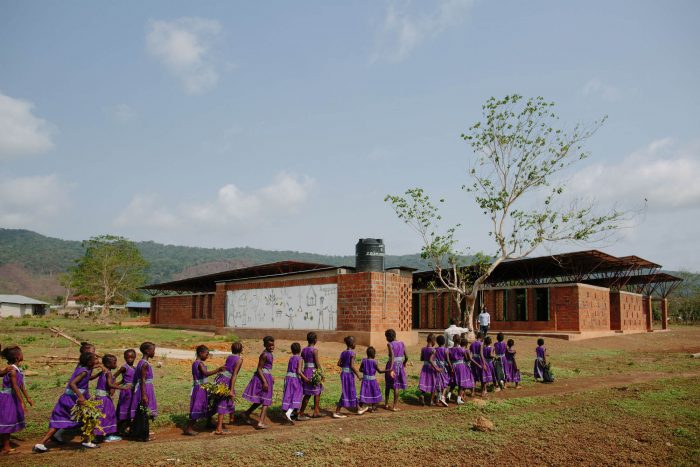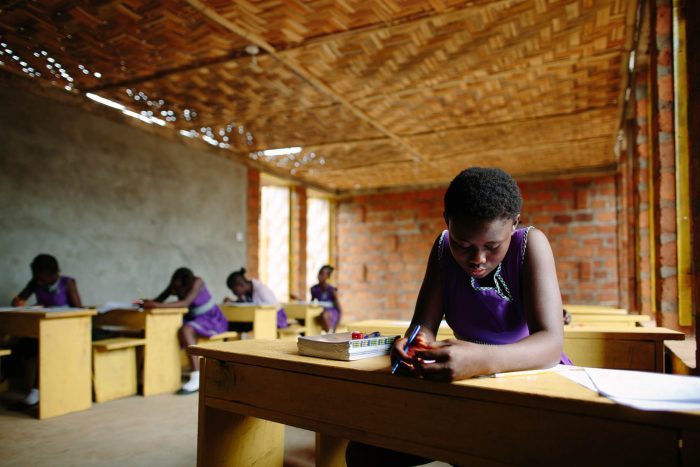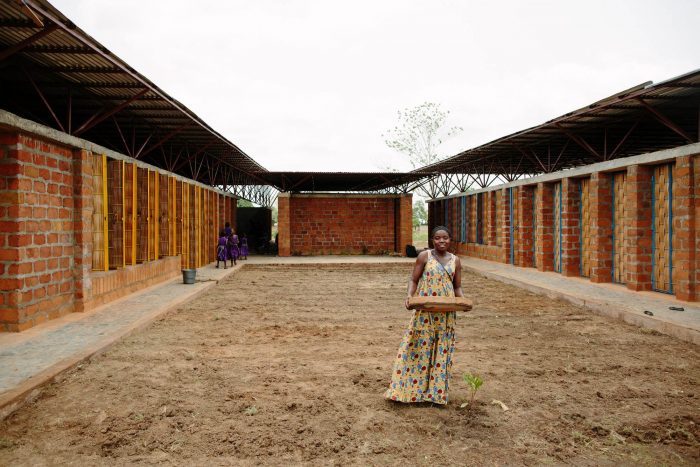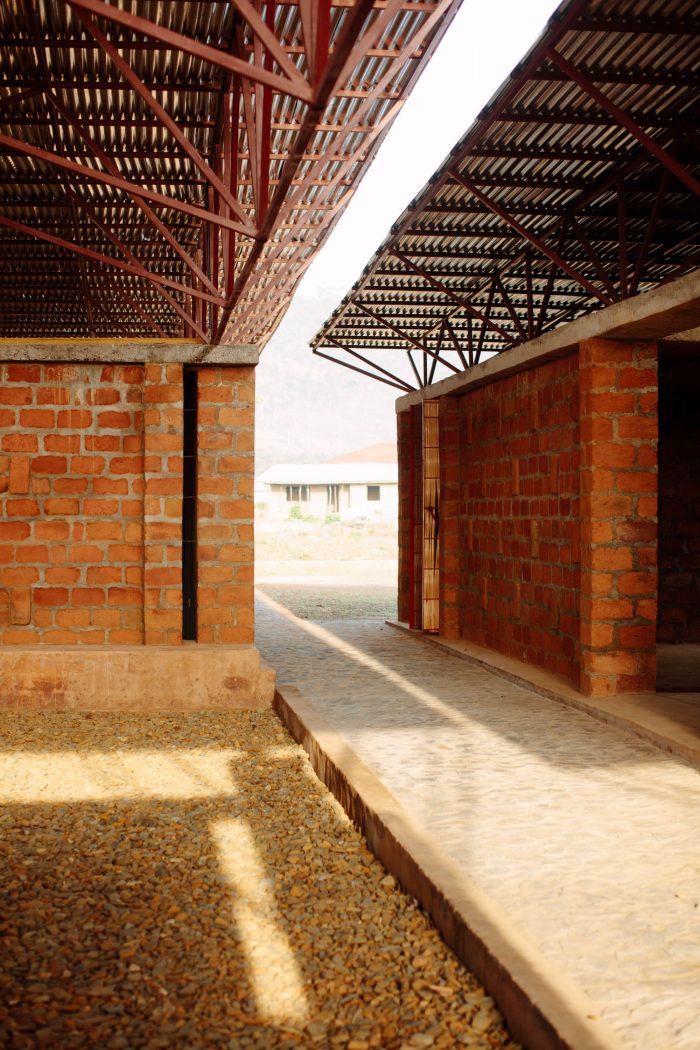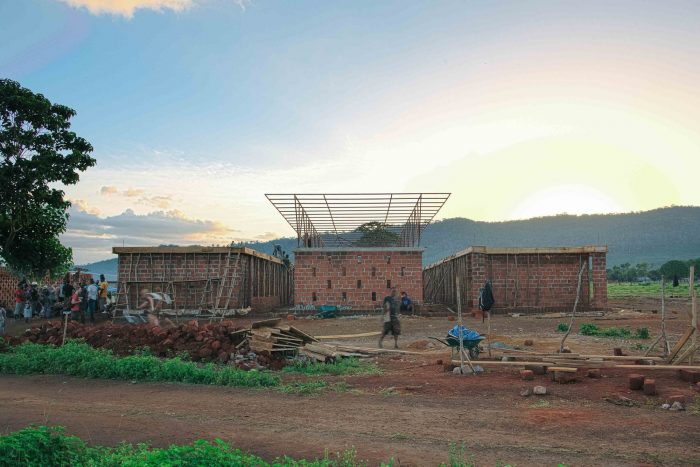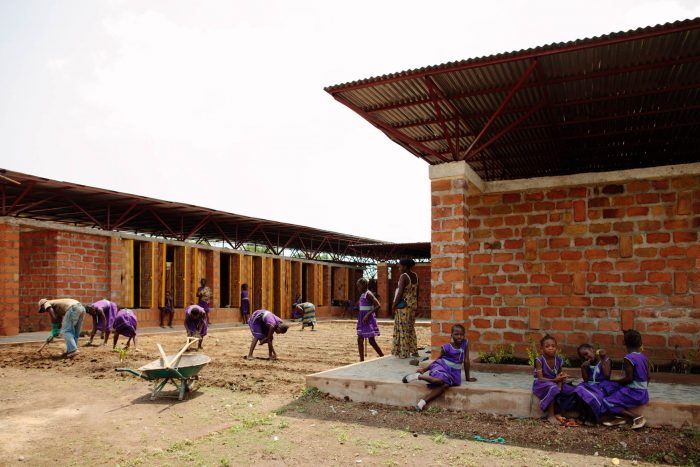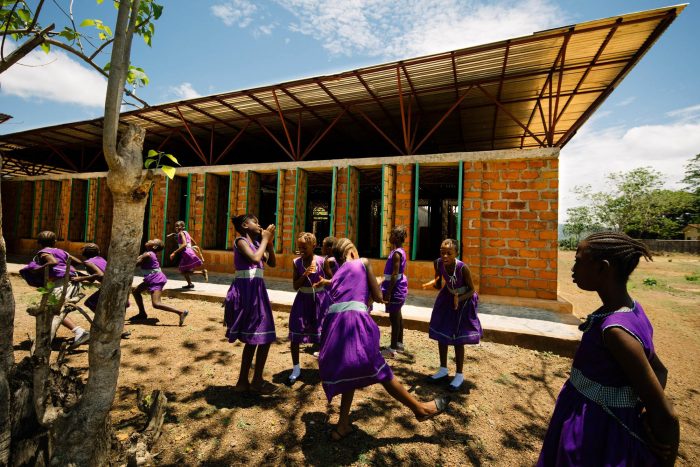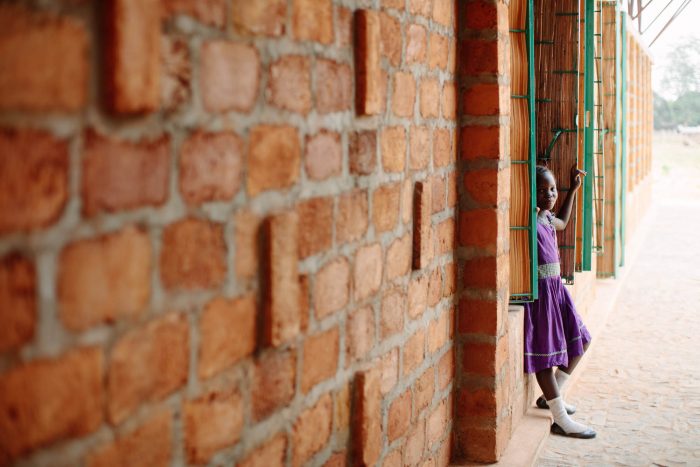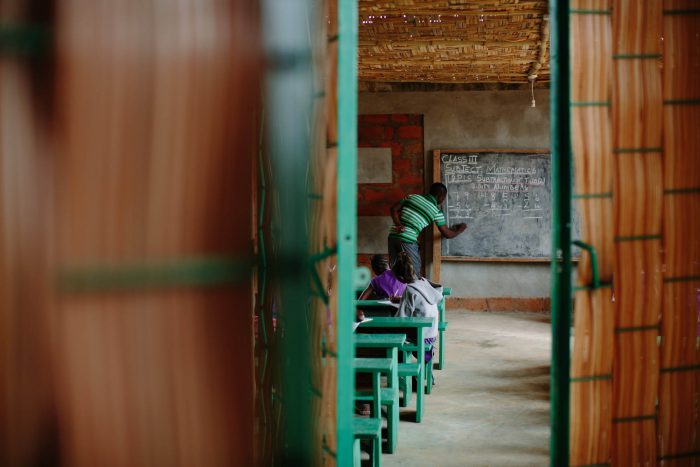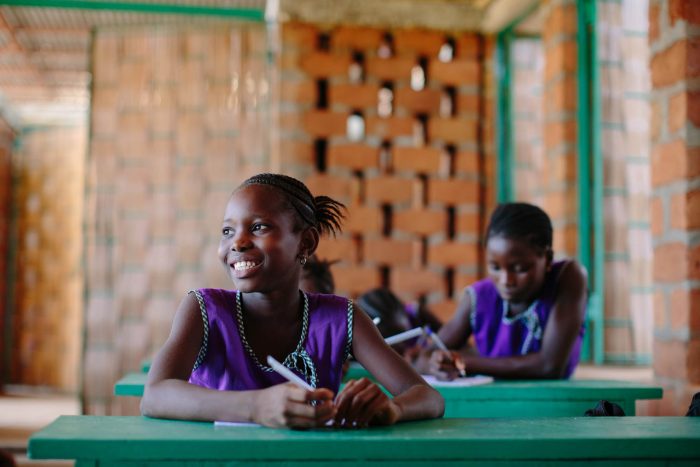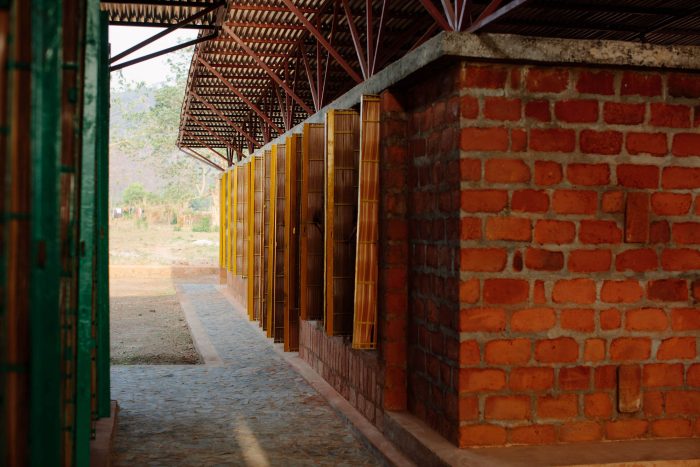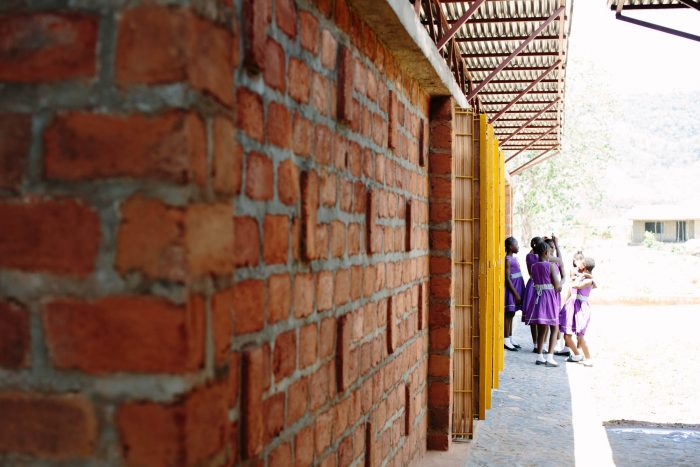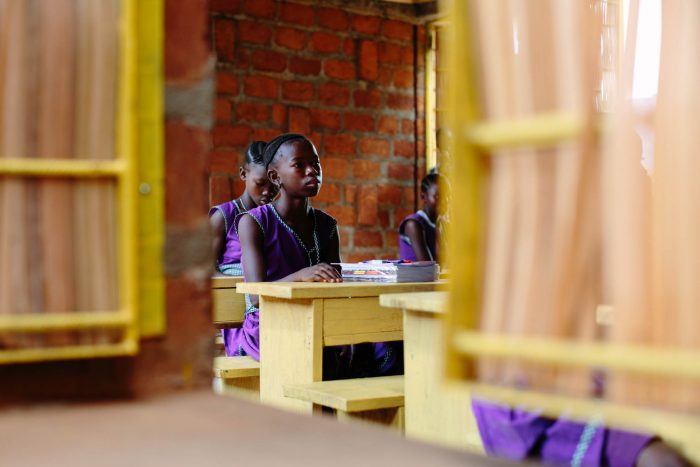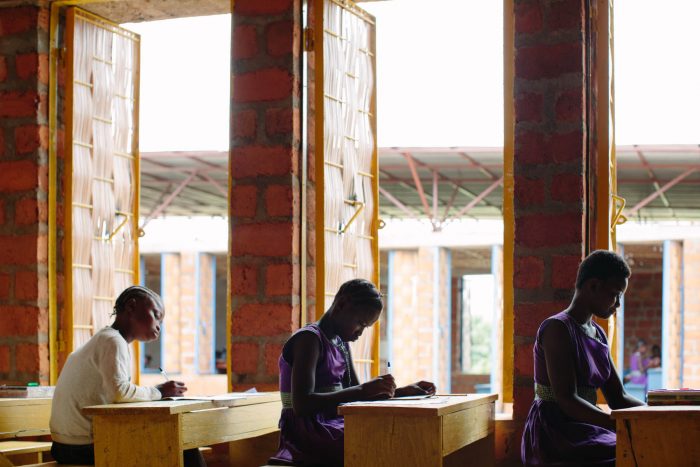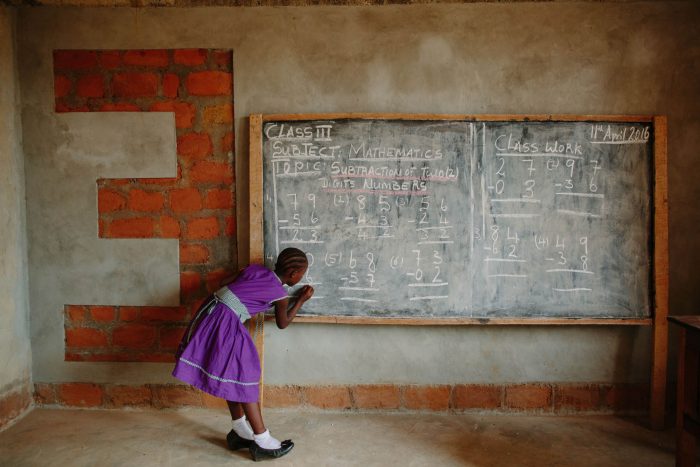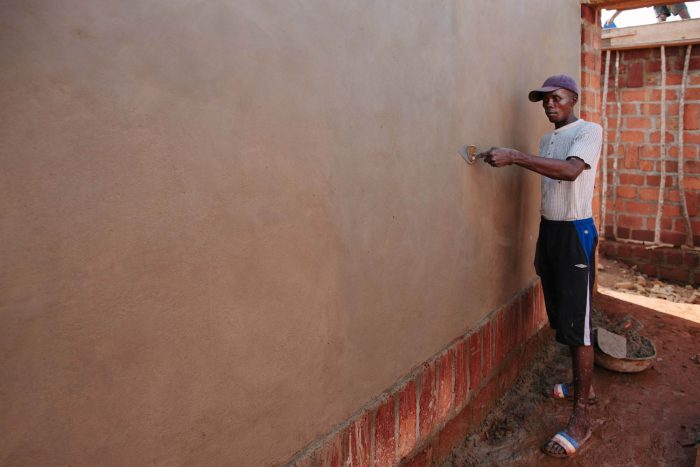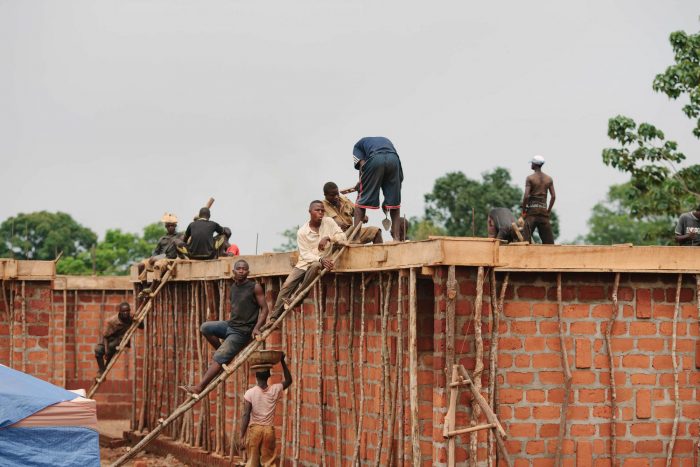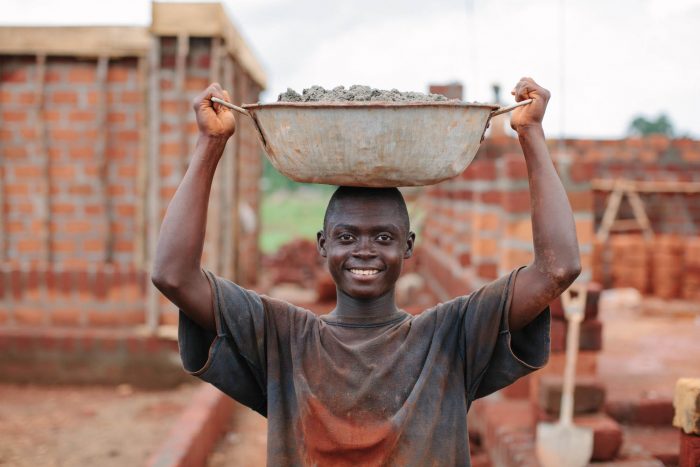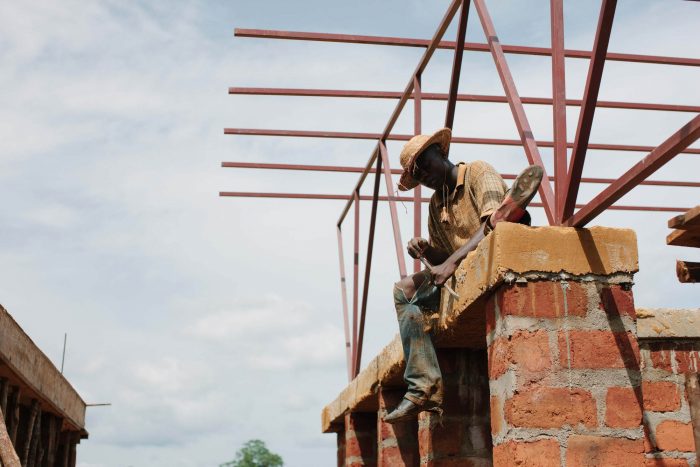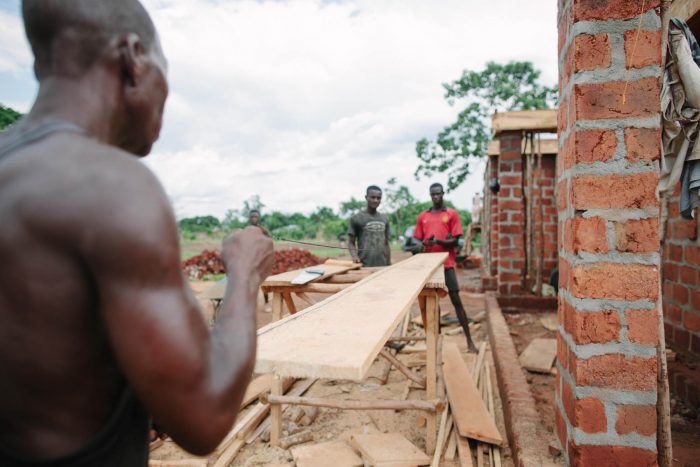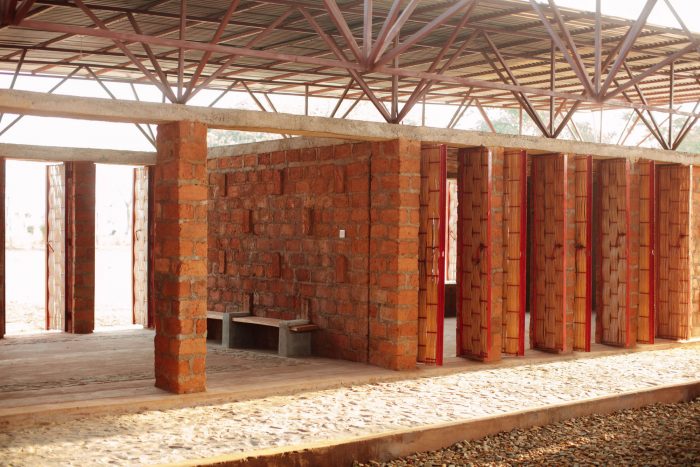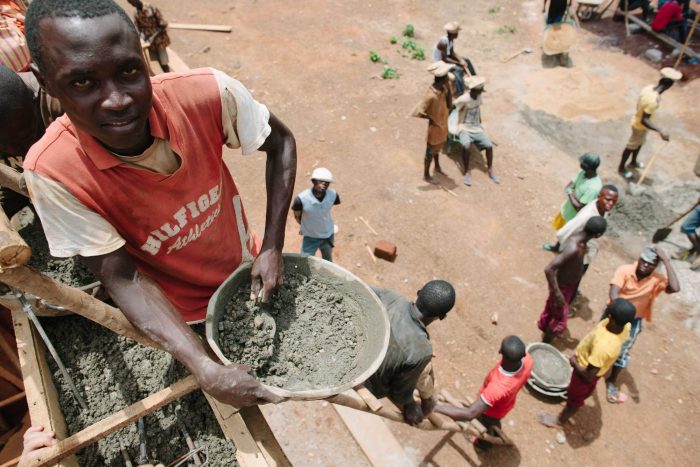西非埃博拉疫情于2014年3月首次报告,并迅速成为自1976年发现该病毒以来最致命的疫情。埃博拉疫情已经是一个面临严重经济和社会挑战的国家,正从十多年的内战中恢复过来,埃博拉疫情对其发展和增长又是一个打击。然而,对于该国东部省份的一个社区来说,新的斯瓦乌女子学校的开办为一群了不起的年轻女性带来了希望和鼓舞。
The Ebola outbreak in West Africa was first reported in March 2014, and rapidly became the deadliest occurrence of the virus since it discovery in 1976. Already a country with severe economic and social challenges, recovering from over a decade of civil war, the Ebola epidemic has been yet a further blow to its development and growth. Yet, for one community in the country’s eastern province, the opening of the new Swawou School for Girls offers hope and inspiration to a remarkable group of young women.
两年前,即2014年2月,Orkidstudio在该国东部地区的Kenema为一所新的女子学校破土动工,每天从当地社区雇佣多达七十名男女。Swawou基金会试图为当地多达120名年轻女孩提供大量新的学习设施。这所学校由Ahmed Jaward和Kirsty Wood于2009年成立,是附近唯一一所不允许体罚的学校,培养出的年轻女孩拥有其他地方无法比拟的自信和智慧。这座建筑在还没有封顶之前,就被国家广播电台评选为 “塞拉利昂最好的学校”。
Two years ago, in February 2014, Orkidstudio broke ground on a new girls’ school in Kenema, in the eastern region of the country, employing as many as seventy men and women from the local community each day. The Swawou Foundation sought to provide extensive new learning facilities for up to 120 young girls from the local area. First set up in 2009 by Ahmed Jaward and Kirsty Wood, it was the only school around that didn’t allow corporal punishment, and is producing young girls with confidence and intelligence unparalleled elsewhere. The building was voted the ‘best school in Sierra Leone’ on a national radio station before it even had a roof on.
然而,距离完工仅4周,在最后一块顶板还未安装的情况下,由于该地区出现了首批埃博拉病毒确诊病例,工程进度被叫停,工地也被关闭。即使在那时,关于巫术、诅咒和政治游戏的误导性传言仍在流传。这一时期的特点是恐惧和混乱的感觉,没有人真正知道如何保护自己,更不用说了解发生了什么。塞拉利昂最后的恐怖,即1991年爆发的内战,持续了大约11年,对许多人来说仍然是最近的记忆,尽管政治腐败和犯罪持续不断,但该国仍处于和平状态,并努力改善自己。塞拉利昂已经是世界上最贫穷的国家之一,现在面临着埃博拉带来的进一步社会和经济痛苦。
Yet, just four weeks from completion, and with the final roof sheets still uninstalled, progress was brought to a halt and site closed as the first confirmed cases of the Ebola virus hit the region. Even then, misguided rumours of witchcraft, curses and political playmaking were in circulation. This period was characterised by mixed feelings of fear and confusion, nobody really knew how to protect themselves let alone understood what was going on. Sierra Leone’s last horror, the civil war which erupted in 1991 and lasted some eleven years, was still a recent memory for many of its people and despite continued political corruption and crime, the country was at peace and trying hard to better itself. Already one of the world’s poorest nations, Sierra Leone is now faced with further social and economic suffering as a direct result of Ebola.
在西非地区被宣布为无埃博拉之前,整个西非地区有记录的死亡人数超过了11000人。然而,在这样的危机之后,建筑又能发挥什么作用呢?建筑师在面对天灾人祸时,往往能找到明确的干预原因,帮助重建倒塌的城镇,或者为流离失所、没有住所的人群提供解决方案。然而,当灾难本身是无形的,是毁灭性的无形威胁时,建筑还能发挥什么作用吗?
The number of recorded deaths exceeded 11,000 across West Africa before the region was declared Ebola free. Yet, what role can architecture play in the aftermath of such a crisis? Architects have often found a clear cause for intervention when faced with natural or manmade disasters, helping rebuild fallen towns and cities or offering up solutions to populations displaced and without shelter. However, when the disaster itself is formless, an invisible threat of devastating proportions, is there any role at all that architecture can play?
埃博拉疫情或许没有拆毁建筑,也没有让人们无家可归,然而它所留下的社会和经济和解的程度却是巨大的。2016年1月,已经严重杂草丛生、长草的教学楼重新开工。在经历了许多新的挑战和困难后,这座被忽视和荒废了两年的建筑如今在西非的阳光下傲然屹立,熠熠生辉。要让这个美丽的国家重新站起来,大步向前迈进,并进一步改变其全球形象,还有很长的路要走,然而,在这个案例中,一座新的建筑已经向一群兴奋的年轻学生敞开了大门,为当地社区提供了新的工作机会,并且可能代表着比它的材料更多的东西。
The Ebola epidemic may not have torn down buildings or left people without a home, yet the extent of social and economic reconciliation that it has left in its wake is vast. In January 2016 work resumed on the school building which had become badly overgrown with weeds and long grasses. Following many new challenges and difficulties, a building that had stood neglected and forlorn for two years now stands proud and gleaming in the west African sun. It’s a long way ahead to get this wonderful country fully back on its feet and striding forwards, and further still to transforming its global image, however, in this case a new building has opened its doors to a cohort of excited young school students, offering new jobs to the local community, and might just stand for something far more than the materials it’s built from.
关于斯沃沃基金会
Swawou Layout社区女子小学成立于2009年,为来自弱势背景的女孩提供免费小学教育。学校位于塞拉利昂东部凯内马镇一个名为Swawou Layout的地区。所有女孩都与父母、监护人或其他家庭成员一起住在当地社区内。Swawou学校基金会努力通过筹资和支持,协助学校实现其目标和雄心。www.swawou.org。
About The Swawou Foundation
The Swawou Layout Community Primary School for Girls was set up in 2009 to offer a free primary education to girls from disadvantaged backgrounds. The school is located in an area called Swawou Layout in Kenema town, eastern Sierra Leone. All of the girls reside within the local community with their parents, guardians or other family members. The Swawou School Foundation strives to assist the school in achieving its goals and ambitions through fundraising and support. www.swawou.org
建筑师:Orkidstudio
面积:1000 m²
年份:2016年
摄影师:Peter Dibdin
项目总监:James Mitchell
Site Team :Andrew Perkins, Kirsty Cassels, Paul Elliott, Spencer Fretwell, and local community
结构工程师:StructureMode
主承包商:Orkidstudio
客户: The Swawou Foundation
总费用:90,000英镑
成本/m2:90英镑/m2
城市 : 凯尼玛
国家:塞拉利昂
Architects: Orkidstudio
Area: 1000 m²
Year: 2016
Photographs:Peter Dibdin
Project Director:James Mitchell
Site Team :Andrew Perkins, Kirsty Cassels, Paul Elliott, Spencer Fretwell, and the local community.
Structural Engineers:StructureMode
Main Contractor:Orkidstudio
Client:The Swawou Foundation
Total Cost :£90,000
Cost/M2:£90/m2
City:Kenema
Country:Sierra Leone

